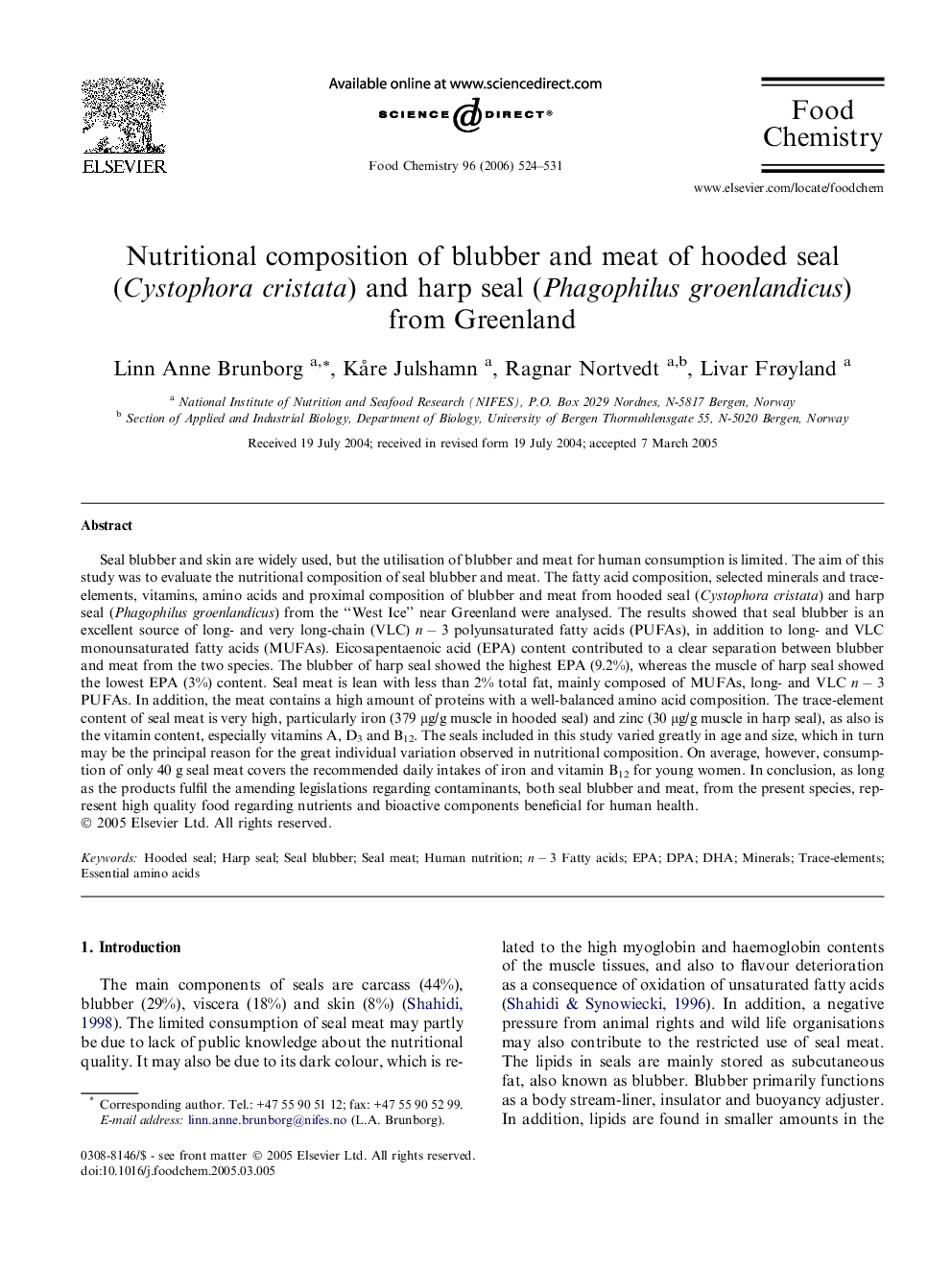| Article ID | Journal | Published Year | Pages | File Type |
|---|---|---|---|---|
| 1191516 | Food Chemistry | 2006 | 8 Pages |
Seal blubber and skin are widely used, but the utilisation of blubber and meat for human consumption is limited. The aim of this study was to evaluate the nutritional composition of seal blubber and meat. The fatty acid composition, selected minerals and trace-elements, vitamins, amino acids and proximal composition of blubber and meat from hooded seal (Cystophora cristata) and harp seal (Phagophilus groenlandicus) from the “West Ice” near Greenland were analysed. The results showed that seal blubber is an excellent source of long- and very long-chain (VLC) n − 3 polyunsaturated fatty acids (PUFAs), in addition to long- and VLC monounsaturated fatty acids (MUFAs). Eicosapentaenoic acid (EPA) content contributed to a clear separation between blubber and meat from the two species. The blubber of harp seal showed the highest EPA (9.2%), whereas the muscle of harp seal showed the lowest EPA (3%) content. Seal meat is lean with less than 2% total fat, mainly composed of MUFAs, long- and VLC n − 3 PUFAs. In addition, the meat contains a high amount of proteins with a well-balanced amino acid composition. The trace-element content of seal meat is very high, particularly iron (379 μg/g muscle in hooded seal) and zinc (30 μg/g muscle in harp seal), as also is the vitamin content, especially vitamins A, D3 and B12. The seals included in this study varied greatly in age and size, which in turn may be the principal reason for the great individual variation observed in nutritional composition. On average, however, consumption of only 40 g seal meat covers the recommended daily intakes of iron and vitamin B12 for young women. In conclusion, as long as the products fulfil the amending legislations regarding contaminants, both seal blubber and meat, from the present species, represent high quality food regarding nutrients and bioactive components beneficial for human health.
